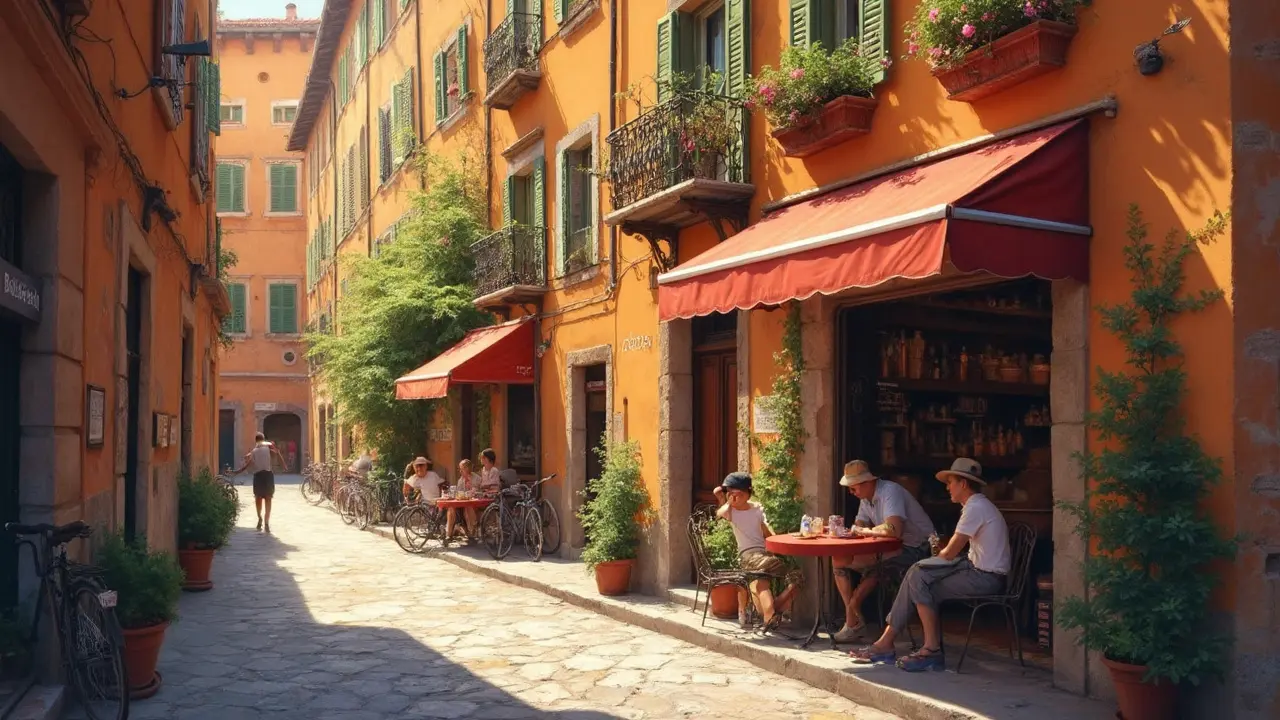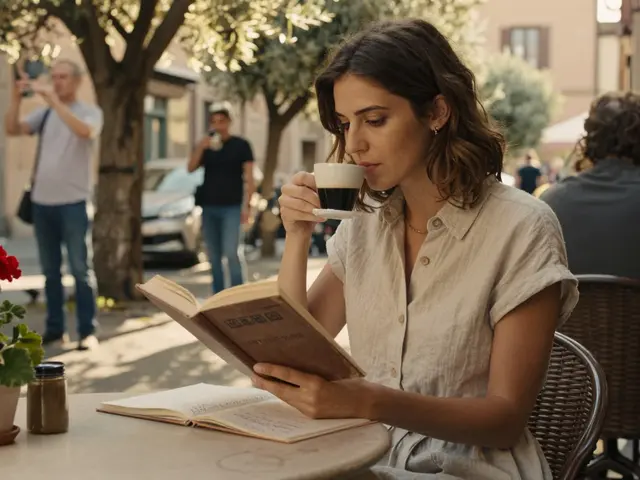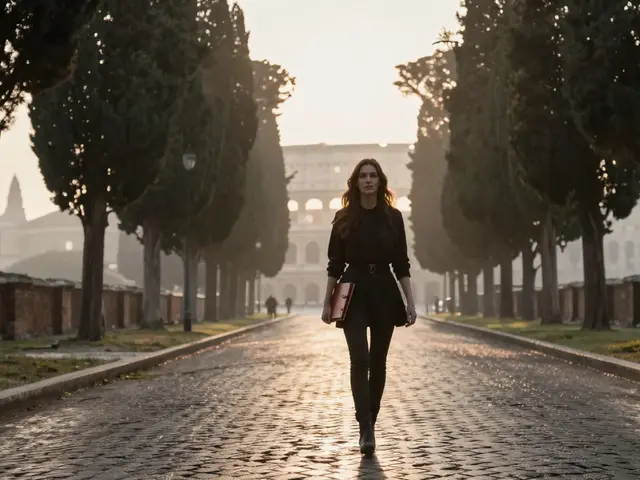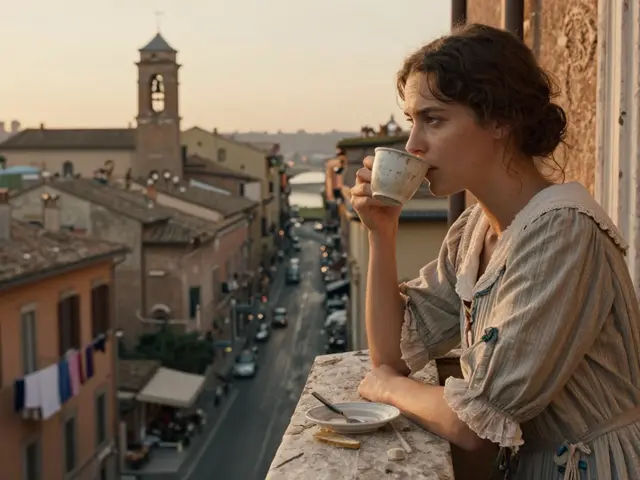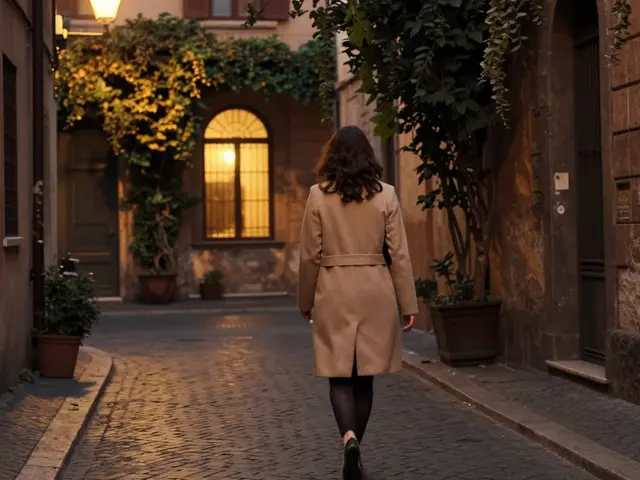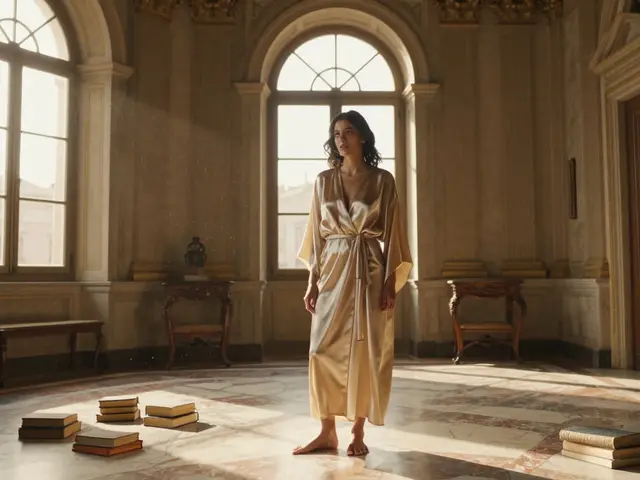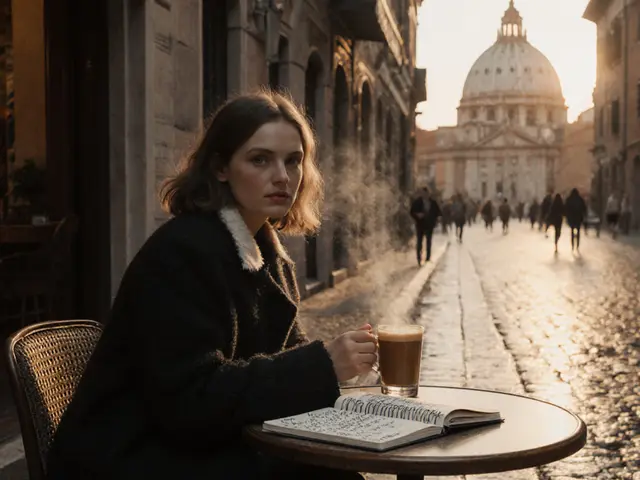If you think you’ve “done” Rome after a whirlwind tour of the big famous sights, think again. Most folks skip the places that give the city its real edge—the spots only true locals know. Gia Dimarco knows Rome inside out, not from chasing crowds, but from poking around markets, ducking into backstreet cafes, and hunting for places most visitors breeze past. That’s what this guide is all about: helping you pull off a Rome trip that surprises even frequent travelers.
Getting off the beaten path in Rome isn’t hard if you know where to look. For starters, forget about standing in line at the same old ruins. How about following Gia’s list of tucked-away gems that give you the real vibe? You don’t need a guidebook for this—just a little local know-how and a willingness to try something new.
- An Unexpected Take on Classics
- The Cafes Nobody Tells You About
- Where Locals Actually Shop
- Oddball Museums and Secret Art
- Cool Neighborhoods to Wander
- Rome’s Hidden Nightlife
An Unexpected Take on Classics
Sure, everyone wants to see the Colosseum and the Vatican. But Gia Dimarco swears that you don’t have to jostle with the massive crowds to enjoy Rome’s big-name sights. There are easier routes, quieter times, and clever hacks that can flip a classic Roman day on its head—in a good way.
For instance, hit the Roman Forum right when it opens, just after 8:30 a.m. Most tourists still haven’t finished breakfast, so you can wander through ancient ruins with hardly anyone around. Or skip the main entrance and head in via the Palatine Hill side. The line is almost always shorter, and the views right from the top are underrated. Gia likes to pack a simple sandwich from a nearby bakery and eat overlooking the ruins, just like neighborhood office workers do on their lunch break.
Want to make the Trevi Fountain memorable? Forget tossing coins in the middle of the afternoon. Go at dawn, around 6:00 a.m., and you’ll often have the whole place to yourself. Bring a little coffee—nobody is stopping you—and enjoy the peace before selfie sticks invade.
Even the Pantheon, which gets packed these days, has a trick: it’s quiet right at the last reseved slot in the evening (the booking policy changed in 2023—get your free ticket online ahead). Gia skipped the biggest wave of tourists doing this, and the photos come out way better without the crowds.
- Early bird = empty attractions
- Find side entrances to famous spots
- Book mandatory tickets online (especially post-pandemic)
- Bring your own picnic for memorable breaks
Here’s how these changes look by the numbers:
| Attraction | Regular Daily Visitors | Best Quiet Time |
|---|---|---|
| Colosseum | ~20,000 | 8:30 - 9:30 a.m. |
| Trevi Fountain | ~1,200/hour | 6:00 - 7:00 a.m. |
| Pantheon | ~8,000 | Last time slot of day |
The Rome travel crew might miss these simple tricks. Gia’s approach is to outsmart the crowds and find spaces to really soak up the classics, no stress, no big tour groups breathing down your neck.
The Cafes Nobody Tells You About
Most visitors hang around the flashy piazzas or famous streets, but the real coffee scene in Rome is way quieter—and more interesting. Gia Dimarco’s favorite spots aren’t packed with crowds snapping pictures of foam art; they’re lived-in, even scruffy, full of Romans who know a good espresso when they taste it. You want a real break from tourist lines? Head to these lesser-known places where baristas might not speak much English but won’t blink if you order a cornetto with your coffee at 10 a.m. (unusual outside Italy).
Start with Bar San Calisto in Trastevere. Here, an espresso still costs around €1.30, and nobody’s in a rush. It’s the type of place where old men argue about soccer, students stretch out on the terrace, and the vibe just feels straight-up Roman. Don’t expect free Wi-Fi or oat milk. Do expect the perfect spot to people-watch.
Another hidden gem? Faro – Luminari del Caffè. It’s near the Policlinico area, way outside the usual tourist circuit. These folks take coffee seriously, doing single-origin brews and even workshops for locals. Gia swears by their filter brew; plus, they actually let you linger.
- Rome travel pros usually pop into Sant’Eustachio Il Caffè for a reason: their "grand caffè speciale" has a secret sugar mix whipped right into the shot. There’s barely any seating, and standing at the bar isn’t just common, it’s expected. Try ordering “senza zucchero" (without sugar) if you want it plain.
- Pasticceria Regoli isn’t directly in the center but it’s well-known with locals. The maritozzi here—sweet cream buns—are what Romans daydream about. Pair them with an old-school cappuccino. Best bought before 11 a.m. when they usually sell out.
| Cafe | Neighborhood | Espresso Price (€) |
|---|---|---|
| Bar San Calisto | Trastevere | 1.30 |
| Faro – Luminari del Caffè | Policlinico | 2.00 |
| Sant’Eustachio Il Caffè | Centro Storico | 1.50 |
| Pasticceria Regoli | Esquilino | 1.20 |
A few tips Gia always follows: avoid any cafe with laminated menus in five languages or guys waving you in off the street. The smaller, the better, especially if you see folks standing shoulder-to-shoulder at the bar. And if you want to fit in, pay before you order, drink your coffee fast, and always say “grazie." It sounds simple, but it’s part of what makes coffee culture in Rome so effortlessly cool.
Where Locals Actually Shop
When people visit Rome, they usually hit up those big chain shops or crowded souvenir stands near tourist hotspots. But locals? They don’t bother with all that. Instead, they stick to neighborhood markets, old-school food shops, and tiny stores where you might be the only tourist in sight. If you want your Rome trip to feel more real—and come back with stuff you actually want—skip Via del Corso and try these spots instead.
The Testaccio Market is where modern Romans do their weekly shopping. Forget those pushy vendors selling fridge magnets—here you’ll find about 100 stalls packed with everything from just-picked fruit to handmade pasta. If you’re into food, try the stand called "Mordi e Vai"—locals line up here for the famous Roman sandwiches stuffed with things like slow-cooked beef. The market’s open from 7 a.m. to 3:30 p.m., Monday to Saturday.
Campo de’ Fiori feels touristy at first, but early in the morning, it’s full of locals picking out the best produce and fresh flowers. The prices here drop by late morning, and it’s where chefs from nearby restaurants swing by for seasonal ingredients. Pop into Forno Campo de’ Fiori just off the square for a slice of pizza bianca—light, salty, and nothing like you’d get back home.
If you’re after clothes or house stuff, Monti is your go-to neighborhood. Wander Via del Boschetto or Via Urbana and you’ll hit indie boutiques, secondhand shops, and even a barber shop run by the same family since the 1950s. There’s zero fast fashion here; everything feels curated, and prices are better than the big-name streets.
- Rome travel tip: Skip the main drag and try smaller markets for better deals.
- Borghetto Flaminio Market runs on Sunday mornings, and it’s a goldmine for vintage clothes, vinyl, and old postcards.
- For kitchen gadgets, Castroni (with several locations) has every Italian coffee gadget you can imagine and quirky candies to bring home.
Wondering what locals really spend on day-to-day shopping in Rome? Here’s a look:
| Item | Local Price (Euro) |
|---|---|
| Fresh bread (1 loaf, bakery) | 2.00 |
| Seasonal fruit (1 kg, market) | 2.50 |
| Artisan cheese (200g) | 4.50 |
| Espresso (at neighborhood bar) | 1.10 |
| Vintage shirt (Borghetto Flaminio) | 10-20 |
Dive into these spots and you’ll snag better deals and better memories than anything at a tourist shop. Plus, you’ll get to see the real side of Roman daily life—something most guidebooks barely mention.
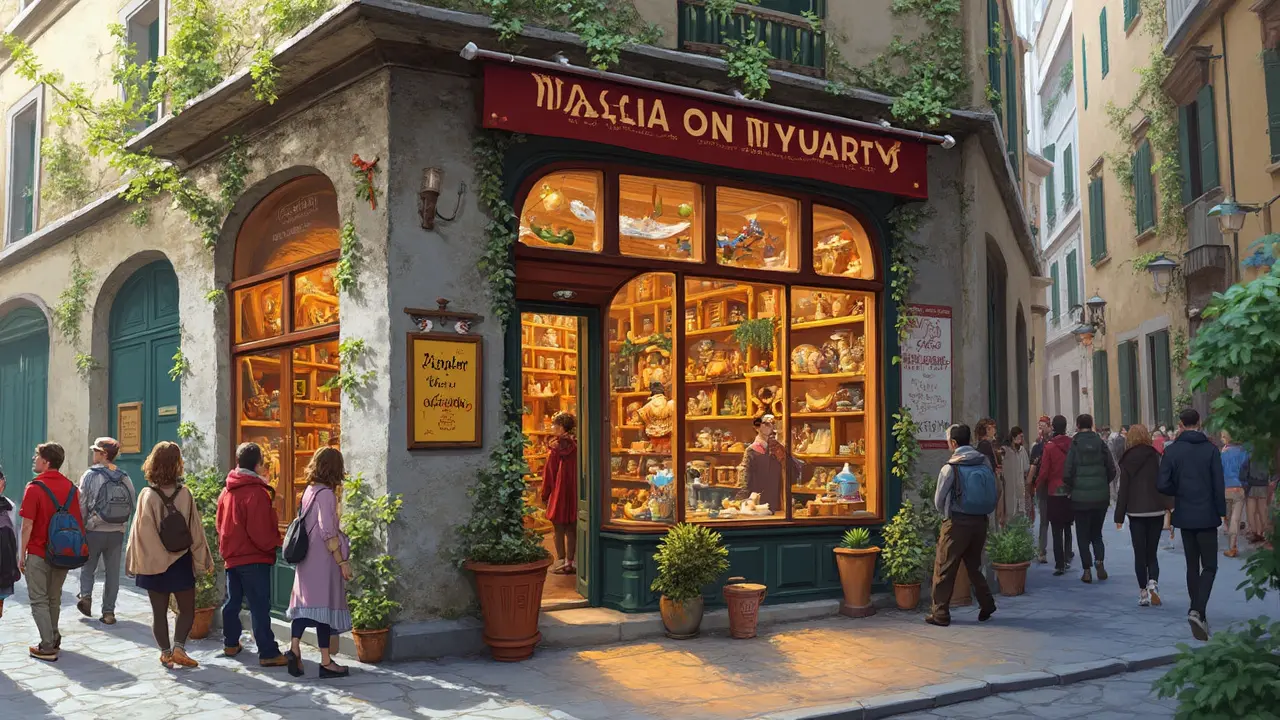
Oddball Museums and Secret Art
Rome’s packed with world-famous art, but a few museums here fly way under the radar. Let's get into the places where you can actually enjoy the art without elbowing your way through crowds. You’ll see sides of the city even locals talk about in low voices.
Take Centrale Montemartini, for example. It’s an old power plant now filled with ancient Roman statues, stuck right among the old turbines and machines. It’s weird, unforgettable, and honestly cooler than most big-name museums. If you’re into quirky vibes and history colliding, this spot is a must. The tickets are usually available at the door, and even during summer, lines just don’t happen.
There’s also the Museum of the Souls in Purgatory (Museo delle Anime del Purgatorio). It’s small—just one room—but it’s packed with spooky relics. They claim these are signs from souls stuck between worlds. Skeptical? Sure, but it’s genuinely one of Rome's hidden gems if you like things on the stranger side. Entry is by donation, so bring some coins.
"Rome is not just an open-air museum. Its hidden collections tell some of the city’s best stories," says Gianni Moretti, curator and Rome resident.
On the art front, don’t skip the Galleria Sciarra. Most tourists walk right past it without knowing. Step inside an unassuming passage near Via del Corso and you’ll find walls covered in stunning Art Nouveau frescoes. It feels like you just tripped into a secret painted movie set, totally free.
- Rome travel tip: Many of these spots open later or shut after lunchtime, so always double-check hours online.
- Photography is usually okay, but always ask if you’re unsure. Locals respect these places and it’s good form to do the same.
If you want stats, check this out:
| Museum | Visitors/year* | Entry Fee (EUR) |
|---|---|---|
| Centrale Montemartini | 52,000 | 11 |
| Museum of the Souls in Purgatory | 12,000 | Donation |
| Galleria Sciarra | Free walk-through | 0 |
*Estimates from the most recent city tourism records.
Hidden art doesn’t mean boring art. These stops let you see another Rome—the one folks whisper about at the next table over. That’s really where the city gets its character.
Cool Neighborhoods to Wander
Rome’s big sights hog the spotlight, but the real charm lives in its everyday neighborhoods. Gia Dimarco loves steering away from the jam-packed piazzas into districts where friends hang out at late-night bakeries or argue over espresso in tucked-away bars. If you want to experience the city as the locals do, check out these spots.
Rome travel feels totally different in Pigneto. Locals joke it’s Rome’s answer to Brooklyn, but with more scooters and fewer beard oil shops. Street art covers every corner, and you can find music bars, street food stalls, and record stores, all in one evening. There’s a sense of freedom here; no one’s rushing for selfies. Drop by Necci dal 1924 (it’s the café from classic movie Bicycle Thieves) for a cheap breakfast or a casual dinner.
Then there’s Testaccio—a district stamped by its working-class roots. The old slaughterhouse is now a buzzing arts space called MACRO, and the Testaccio market sells fresh produce, snacks (try the trapizzino—half pizza, half sandwich), and vintage clothes. Evenings here mean sitting in piazzas and eating oxtail stew or fried artichokes. Nobody tries too hard, yet the food is a knockout.
If you’re chasing something laid-back, check out Trastevere. Sure, it gets touristy, but head beyond the riverfront, and you’ll find cobbled alleys where locals drink beer on church steps or sing along to guitarists. The Santa Cecilia basilica hides a spooky crypt, and the Orto Botanico (Rome’s botanical garden) has space to breathe if you need a break.
For a bit of quiet, the Coppedè district pays off with its off-the-wall architecture—a jumble of fairytale houses and weird sculptures. You won’t see tour groups here, just families and neighbors out for a stroll, which makes it great for people-watching or snapping weird Instagram shots.
- Pigneto for street art, bars, and offbeat nightlife
- Testaccio for hearty food, markets, and local rhythm
- Trastevere for cozy nightlife, hidden churches, and atmosphere
- Coppedè for quirky architecture and zero tourist crowds
Best tip? Make time to get lost. In these neighborhoods, that’s how you find the good stuff—the bakery with hot maritozzi, the tiny record shop, or the hidden street mural. Bring comfy shoes, keep an eye out for little details, and don’t stick to the main drags. Rome rewards wanderers.
Rome’s Hidden Nightlife
The moment the sun sets in Rome, the city flips a switch. But most tourists crowd into the same old haunts in Trastevere or near the Spanish Steps. Gia Dimarco’s picks dodge the noisy, overpriced spots and send you where locals unwind. If you want to experience the real Rome travel scene after dark, this section spills the details.
Ever heard of Black Market Hall in Monti? It’s buried on a back street and impossible to find by accident. The vibe is relaxed, sometimes with an acoustic band, sometimes sprinkling in stand-up comedy. Drinks don’t cost an arm and a leg, and the bartenders won’t treat you like a lost tourist.
If you lean more indie, try Freni e Frizioni in Trastevere, but skip prime tourist time. Locals flock here for the free buffet that comes with your drink—yes, real, free Italian snacks. Heads up, it gets busy after 9, so roll in before then, grab a table outside, and watch the city buzz.
Testaccio is where Rome’s club scene hides. Giorgio, a Roman friend of mine, swears by Akab, which sits under an old industrial building. It’s been running for decades and brings a mix of live DJs and themed parties. There’s strict security (don’t forget your ID), but you avoid bachelor party chaos found elsewhere.
If you’re after something low-key and local, look for speakeasy-style bars cropping up in San Lorenzo. Bar Necci is a personal favorite. It feels untouched by tourists, has a retro garden, and stays open late. No flashy neon signs—just good drinks and conversation.
| Spot | Neighborhood | Average Drink Price (€) | Open Until |
|---|---|---|---|
| Black Market Hall | Monti | 9 | 2 AM |
| Freni e Frizioni | Trastevere | 8 | 2 AM |
| Akab | Testaccio | 12 | 4 AM |
| Bar Necci | San Lorenzo | 6 | 2 AM |
Quick tip: Always check open hours online before you go—Rome nightlife has funky schedules, especially outside the summer. Most bars fill up late, so don’t head out before 10 pm if you want the real atmosphere. And if you’re lost, just follow the locals after dinner—they know where the hidden gems are.

